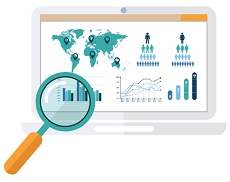
Real-time analytics—that is, using mathematics and logic to gain insights from data as it is collected—is a key component of a sound and smart decision-making process. This capability can be utilized to track the effectiveness of marketing campaigns and see how these efforts are translated to sales, to ensure that the bank can enhance its balance sheet management efforts, boost workflow efficiency, and improve the bank’s understanding of customer behaviors. Real-time analytics is one of the crucial features that forward-looking banks should look for when shopping for solutions and products that will bring the digital revolution to their respective organizations.
Knowing exactly what customers want in real-time is a capability that companies of the past wished they had. Unfortunately, these companies didn’t have the technology or tools to carry out real-time data analysis during their time. Gaining insight into the decision-making processes that their customers use can help banks make timely decisions that will improve the experiences they impart to their customers, resulting in a boost to customer profitability. Just how does real-time analytics affect customer profitability? Here’s how banks can maximize this technology:
Increase the Accuracy of Feedback from Customers
There are plenty of elements that can significantly impact consumer decision-making processes, and it can be difficult to single out these elements if the bank is unable to process and analyze responses in real-time. A retail customer, for example, can have different concerns about their finances on the day they get their salary compared to the other days of the month. Getting feedback and analytics results 24 hours later may completely change how a customer approaches their finances. Knowing customer response in real-time allows the bank to single out factors that can impact customer needs and position itself so that it can adequately provide what its customers need right when they need it.
Yield Higher Response Rates from Customers
Seeing their banks respond quickly to their feedback and knowing that their response matters can encourage customers to keep on providing the banks with the information they need to optimize their business. This can lead to better interaction and relationships between banks and their customers as well as provide the banks with a wealth of information that they can use as input to create models. The data they collect can also be used as references for designing and implementing improvements to their services and products.
Lower the Cost of Long-Term Research Methods
Soliciting responses from digital platforms like mobile applications and websites may prove to be a far cheaper and more accurate means of getting information from customers in the long run. By using digital platforms to collect responses, banks will no longer have to employ additional personnel to encourage clients to fill out forms, collect them once filled out, encode them one by one, and analyze the encoded information. Given that digital platforms are able to feed the information they collected to analytic tools in real-time, banks can depend on the fact that the data they use to base their decisions on is up-to-date with the market’s current opinion and requirements.
Create Opportunity to Deal with Issues as Soon as They Arise
Access to real-time analytics that uses customer response also allows the banks to immediately see if their clients are having difficulties using their digital platforms or brick-and-mortar branches. Such information can immediately alert the bank that they need to address a particular issue, lest they risk alienating loyal clients. Real-time response and analytics allow the bank and their customers to work hand-in-hand to ensure their mutual benefit and convenience.
Connecting with Customers Better by Using Real-Time Analytics
Customer experience (CX) is the new battlefront for marketing efforts. According to a 2018 report by Gartner, many experts believe that CX will form the basis of 81% of a customer’s decision-making process in the near future. This is something that banks need to seriously consider and plan for if they want to gain the high ground against their competitors. Failing to do so would mean that their future marketing efforts will likely cost more without showing significant improvements in terms of results or sales.
Access to a real-time analytics solution that can offer timely insights on how customers decide to allocate what resources they have. Consequently, gaining insight into how they select their banks and banking products is a key step in ensuring that banks are able to provide their market with the exact services they need, as soon as they need it. This, in turn, will ensure that customers feel that their needs are met and that the bank they are subscribed to understands the current challenges and opportunities they face. Improving banking relationships in this manner heightens the possibility that customers will be more interested in maintaining a long-term relationship with the bank, thereby increasing the bank’s number of returning customers and raising the average revenue per user and customer lifetime value—a win-win for banks and the people that use their services.






